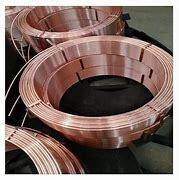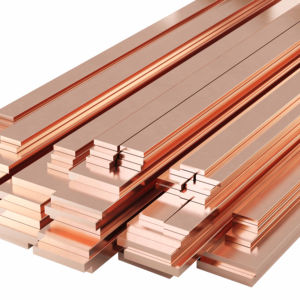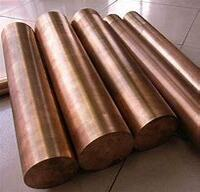1. Introduction
Just 36 hours ago, the London Metal Exchange reported a 4.2% spike in copper prices—pushing copper rod price and copper strip price to their highest levels in 14 months. Why? Global infrastructure projects are surging, and everyone from electricians to scrap recyclers is scrambling to secure copper supplies. Whether you’re salvaging wire from old appliances or installing a new grounding system, knowing how to properly handle copper materials is more valuable than ever.

In this guide, we’ll tackle two critical copper conundrums: (1) the best way to strip copper wire efficiently and legally, and (2) how to choose the right type of copper rod—be it a copper earth rod, copper brazing rod, or copper welding rod—for your job. Spoiler: burning copper wire for scrap is not only illegal in most places but also toxic. Let’s do this the smart (and funny) way.
2. How to Strip Copper Wire Like a Pro (Without Losing Your Mind or Your Fingers)
Stripping copper wire might sound simple—snip, peel, profit—but if you’ve ever tried it with pliers and a prayer, you know it’s a special kind of torture. Fortunately, there are smarter, faster, and safer methods.
2.1. Tools of the Trade
- Manual wire strippers: Great for small batches and precision work. Look for self-adjusting models that won’t nick the copper.
- Automatic wire stripping machines: Ideal if you’re processing more than 10 lbs of wire daily. They’re pricey but pay for themselves in scrap value.
- Razor blades or utility knives: Risky but common among DIYers. Use with extreme caution—copper cuts deeper than heartbreak.

2.2. The Best Way to Strip Copper Wire
Start by sorting your wire. Separate THHN (solid core) from Romex (multi-strand) and high-grade from low-grade. Then, cut insulation every 6–8 inches with your stripper, twist, and pull. For thick cables, a rotary stripper or cable ripper saves hours. Never burn insulation off—besides releasing carcinogens, it oxidizes the copper, slashing its resale value by up to 30%.
If you’re stripping wire for scrap, keep it clean and dry. Scrap yards pay top dollar for bright, bare copper—often called ‘Bare Bright.’ And yes, stripping copper wire for scrap is absolutely worth it… if you do it right.
3. Choosing the Right Copper Rod: Not All Rods Are Created Equal

Here’s where things get spicy. The term ‘copper rod’ covers everything from earthing rods to welding rods—and confusing them could lead to anything from a failed weld to an electrical fire. Let’s decode the jargon.
3.1. Copper Earth Rod vs. Copper Bonded Ground Rod
Need grounding? A pure copper earth rod is corrosion-resistant and ideal for high-moisture soils—but it’s expensive. Most contractors opt for a copper bonded earthing rod (also called copper bonded steel or copper clad steel earth rod), which has a steel core for strength and a copper coating for conductivity. It’s cheaper, durable, and widely available as a copper clad ground rod or copper clad earth rod. Check local codes—some regions require minimum copper thickness (usually 0.25mm).
3.2. Welding and Brazing: Copper Rods That Stick
For joining copper to copper, you’ll need either a copper brazing rod or a copper welding rod. Copper to copper brazing rods (often phosphorus-copper alloys) work beautifully with capillary action and don’t require flux for copper-to-copper joints. Meanwhile, copper rod for welding—like ERCu or beryllium copper strip variants—is used in TIG or MIG processes for high-strength applications. Note: standard ‘welding rod copper’ won’t fuse well without proper shielding gas and preheat.
Pro tip: Never use aluminum rods on copper. It’s like dating your ex’s sibling—technically possible, but emotionally (and electrically) disastrous.
4. Bonus: Copper Strip, Round Bar, and Other Copper Cousins
While you’re shopping, you might also encounter copper strip, copper round bar, or copper bus bar. Flat copper strips (like 25x3mm or 1mm copper strip) are common in earthing systems—search ‘copper earth strip 25x3mm price’ for quotes. Need flexible connections? Look for flexible copper bus bar or nickel plated copper strip. And if you see ‘copper tape for snails’—yes, that’s a real gardening product, but probably not relevant to your electrical project.
For structural or machining uses, copper round bar (aka round bar copper) and copper flat bar are go-tos. Prices vary by purity and form—check ‘copper bar price’ or ‘copper ingot price’ if you’re buying in bulk.
5. Conclusion
Stripping copper wire doesn’t have to be a chore, and choosing the right copper rod shouldn’t feel like decoding ancient runes. Whether you’re after a copper bonded ground rod for your home’s earthing system or copper to copper welding rod for a plumbing fix, match the material to the mission. And remember: skip the burn method, invest in proper tools, and always check current copper rod price trends before selling or buying. Copper may not be digital gold—but right now, it’s pretty close.
Our Website founded on October 17, 2012, is a high-tech enterprise committed to the research and development, production, processing, sales and technical services of ceramic relative materials such as How. Our products includes but not limited to Boron Carbide Ceramic Products, Boron Nitride Ceramic Products, Silicon Carbide Ceramic Products, Silicon Nitride Ceramic Products, Zirconium Dioxide Ceramic Products, etc. If you are interested, please feel free to contact us.

